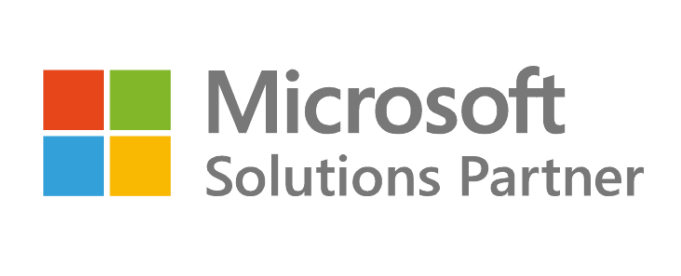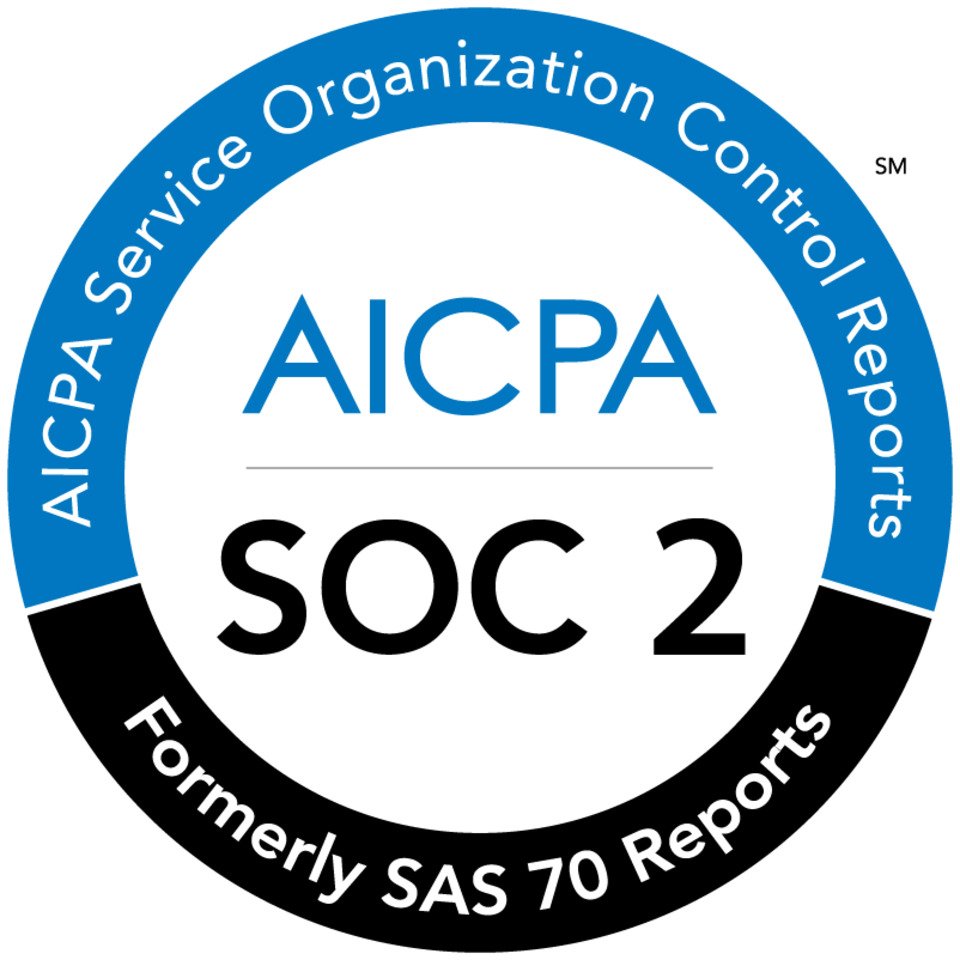Predictive Client & Revenue Analytics
We partner with industry leaders



Industries That Benefit
Banking Institutions
Retail and commercial banks manage millions of client relationships with limited visibility into future behaviors, making retention and growth strategies inefficient and reactive. Traditional metrics fail to predict account closures, competitive threats, or expansion opportunities until it’s too late for effective intervention.
Digital banks face unique challenges predicting user engagement and premium conversion without face-to-face relationship signals.
Private banks struggle to identify which high-value relationships warrant greater investment while investment banks need better forecasting of institutional client needs. Relationship managers lack analytical tools to prioritize effectively among hundreds of assigned clients, leading to missed opportunities and preventable attrition.
Banking teams benefit from:
- Precise identification of highest-value growth opportunities within existing clients
- Early warning of account consolidation or competition risks
- Clear guidance on which retention offers will resonate with specific clients
- 30-40% improvement in marketing campaign performance
Wealth & Asset Management
Wealth managers face increasing competition for high-net-worth clients while struggling to identify which relationships warrant greater investment and attention. Traditional metrics fail to predict client departure until assets actually transfer, creating missed intervention opportunities and revenue loss.
Boutique wealth firms lack resources for comprehensive relationship analysis, often missing early warning signs of client dissatisfaction.
Family offices manage complex multi-generational relationships requiring sophisticated prediction of changing needs and preferences.
Asset management firms need better forecasting of redemption risks and expansion opportunities across diverse investor segments.
Our predictive analytics deliver:
- 70% earlier identification of at-risk high-net-worth relationships
- Precise guidance on next-best actions for specific clients
- Accurate differentiation between temporarily inactive and truly disengaging clients
- 25-35% reduction in wealth management relationship attrition
Investment Firms
Private equity and venture capital firms must allocate limited client service resources across diverse investor relationships while identifying which clients present the greatest growth potential for future funds.
Hedge funds struggle to predict investor behavior during market volatility, often losing assets due to inadequate relationship management during stress periods.
Investment organizations lack sophisticated tools to identify which investors are most receptive to additional investment opportunities or alternative products. Traditional segmentation approaches miss significant relationship development opportunities, leading to suboptimal capital raising and investor retention.
Investment committees need better data on investor preferences and behaviors to guide relationship strategies effectively.
Investment teams gain:
- Sophisticated investor behavior prediction during market volatility
- Identification of investors most receptive to additional investment options
- Early detection of redemption risks before withdrawal requests
- Precise targeting of investor communications based on individual preferences
Fintech Companies
Digital financial platforms face unique challenges predicting user engagement, premium conversion, and churn without traditional relationship signals from face-to-face interactions.
Payment platforms struggle to identify which merchants and users present the greatest expansion opportunities for additional services.
Lending startups need better prediction of borrower behavior, repayment risks, and cross-sell potential across their user base.
Crypto exchanges and digital wallets require sophisticated analytics to predict user lifetime value and retention probability in highly volatile markets.
BNPL platforms must identify optimal timing for credit limit increases and additional product offerings while managing risk exposure.
Fintech operators benefit from:
- Precise digital behavior analysis that predicts future engagement patterns
- Early identification of users ready for premium service conversion
- Detection of usage patterns that indicate competitive exploration
- 40-50% improvement in user retention through targeted intervention
Capital Markets & Trading
Brokerages struggle to predict which clients will increase trading activity, require additional services, or potentially move assets to competitors.
Market makers need sophisticated analytics to identify institutional clients most likely to expand trading relationships or require customized execution services.
Securities exchanges require better forecasting of member engagement and revenue potential from different participant categories.
Prop trading firms need analytics to predict which investor relationships will generate consistent capital allocation and long-term partnership opportunities.
Trading desks lack visibility into client relationship health and expansion potential, limiting their ability to optimize service delivery and revenue growth.
Trading operations receive:
- Predictive modeling of institutional client trading behavior and needs
- Early identification of relationship risks before client departures
- Sophisticated forecasting of commission revenue by client segment
- Optimal timing guidance for introducing new trading products and services
Insurance & Risk Providers
Insurance companies struggle to predict policy retention, cross-line expansion opportunities, and lifetime customer value across complex multi-policy relationships.
General insurers face challenges identifying which commercial clients present the greatest growth potential for additional coverage lines.
Life and health insurers need better prediction of policy lapse risks and customer lifetime value to optimize marketing investments.
Reinsurers require sophisticated analytics to predict client relationship stability and expansion opportunities in volatile market conditions.
Digital insurers must identify optimal conversion paths from basic to comprehensive coverage while maintaining competitive pricing strategies.
Insurance teams receive:
- 65% earlier detection of policy non-renewal risks
- Household-level analysis of multi-policy relationship potential
- Clear identification of price sensitivity versus service loyalty drivers
- 30-40% improvement in cross-line marketing effectiveness
Crowdfunding & Alternative Finance
Crowdfunding platforms struggle to predict which investors will participate in multiple offerings and become high-value repeat participants.
Real estate investment platforms need better forecasting of investor behavior across different property types and market conditions.
Startup financing platforms require sophisticated analytics to identify which investors present the greatest long-term engagement potential and capital commitment.
Alternative finance providers lack visibility into investor lifetime value prediction and optimal communication strategies for different investor segments.
These platforms face unique challenges predicting investor behavior in response to market volatility and regulatory changes.
Platform operations benefit from:
- Predictive modeling of investor participation across multiple offerings
- Early identification of high-value investors ready for premium opportunities
- Sophisticated analysis of investor preferences and optimal communication timing
- Improved retention of platform participants through data-driven relationship management
Corporate Finance & Treasury Divisions
Corporate finance teams lack sophisticated tools to predict banking relationship stability, optimal financing timing, and vendor relationship management across complex enterprise environments.
Treasury departments struggle to forecast cash flow needs and banking service requirements, often missing opportunities for better terms or additional services.
Internal finance teams need better prediction of which business units will require additional financial services or support.
Strategy and risk offices require analytics to predict market conditions impact on financial relationships and service needs.
These divisions often operate reactively rather than proactively managing their financial service relationships and vendor partnerships.
Finance professionals benefit from:
- Predictive analytics for banking relationship optimization and expansion opportunities
- Early warning systems for vendor relationship risks and renewal timing
- Sophisticated forecasting of financial service needs across business units
- Data-driven guidance for optimizing financial service provider relationships and costs
Problems or Missed Opportunities We Solve
Reactive Retention Approaches
Most financial institutions detect relationship risk only after clients show obvious departure signals—reduced balances, direct complaints, or competitive inquiries. By this late stage, retention success rates typically fall below 20%.
Our predictive approach:
- Identifies at-risk relationships 60-90 days earlier than traditional methods
- Enables proactive intervention while client retention remains possible
- Provides relationship-specific retention recommendations
- Increases successful retention rates to 60-70% through earlier action
Inefficient Marketing Investment
Financial organizations waste 40-50% of marketing budgets targeting clients with low expansion probability or inappropriate timing. These mistargeted efforts create both wasted expenditure and relationship irritation through irrelevant offers.
The solution delivers:
- Precise identification of clients ready for specific product expansion
- Optimal timing guidance for individual relationship approaches
- 45-65% reduction in marketing waste
- Significantly higher conversion rates through better targeting
Limited Relationship Manager Capacity
Client-facing professionals can effectively manage only 15-20 meaningful client interactions weekly, making prioritization essential. Most organizations lack objective guidance on which relationships deserve immediate attention.
Advanced analytics provide:
- Daily prioritization of client interactions based on opportunity and risk
- Clear next-best-action recommendations for each relationship
- Objective relationship health scoring across the client portfolio
- 30-40% more effective capacity allocation of relationship managers
Inaccurate Lifetime Value Assessment
Traditional client valuation focuses on current assets, revenue or policies, missing future potential and retention probability. This incomplete assessment leads to misallocation of service resources and relationship investment.
Comprehensive modeling delivers:
- Multi-year relationship value projections incorporating growth potential
- Identification of currently modest relationships with superior future value
- More accurate service tier alignment based on true relationship worth
- 35-45% improvement in client profitability through better resource alignment
Unpredictable Revenue Forecasting
Financial organizations struggle with revenue projection accuracy, typically missing forecasts by 15-25% due to limited visibility into client behavior patterns and relationship stability. This uncertainty impacts strategic planning and investor confidence.
Predictive forecasting provides:
- 35-45% improvement in revenue projection accuracy
- Earlier identification of emerging forecast risks
- Clearer understanding of behavioral drivers impacting revenue
- More reliable planning for resource allocation and growth initiatives
Case Study
Real Results from Financial Leaders
KYC Automation for a German Payments Fintech
A mid-sized German payment gateway with 180 employees processing approximately €700-800M in annual transactions, active in 6 EU markets.
- 28% conversion increased
- 40% improved performance
Conversational AI for a Spanish Insurance Firm
A traditional Spanish insurance provider with 85 years of history, 950 employees, and €280 million in annual premiums across home, auto, life, and commercial lines.
- 28% conversion increased
- 40% improved performance
Real-Time Fraud Detection in UK Digital Payments App
A fast-growing UK-based mobile payment application with 165 employees processing approximately £1.3 billion in annual transaction volume with around 700k active users.
- 28% conversion increased
- 40% improved performance
AI Copilot for Treasury Operations at a Spanish Payment Orchestration Platform
A mid-sized German payment gateway with 180 employees processing approximately €700-800M in annual transactions, active in 6 EU markets.
- 28% conversion increased
- 40% improved performance
Certifications & Compliance



Benefits of Using the Solution

Substantially Improved Retention
Identify at-risk relationships early enough for successful intervention, dramatically reducing client attrition and associated revenue loss. Financial institutions typically achieve 25-35% reduction in preventable client departures, directly protecting revenue and assets under management.

Superior Growth from Existing Relationships
Discover hidden expansion opportunities within your current client base through precise next-product recommendations and optimal timing. Organizations increase share of wallet by 15-25% within existing relationships, capitalizing on the full potential of already-acquired clients.

Optimized Marketing and Service Investment
Allocate resources with unprecedented precision based on accurate future value projections and relationship potential. Client-facing teams achieve 30-40% greater return on marketing investments and service resources through better targeting and prioritization.

Enhanced Revenue Predictability
Gain clearer visibility into future revenue streams with 35-45% more accurate forecasting that identifies both risks and growth opportunities. Leadership teams benefit from more reliable financial planning and earlier awareness of emerging business trends.

Data-Driven Relationship Management
Transform client interactions from intuition-based to analytically-guided, with clear direction on which clients need attention and what specific actions will strengthen relationships. Client-facing teams achieve measurably better outcomes through data-informed decision making.
Process Flow

Client Data Assessment & Integration
The engagement begins with comprehensive evaluation of your available client data assets, interaction history, and relationship management systems. This assessment identifies valuable predictive signals and integration requirements for a complete analytical foundation.
Predictive Model Development
Data scientists and financial relationship specialists develop customized behavioral models aligned with your specific client base, products, and business objectives. These models incorporate both universal relationship patterns and organization-specific factors that influence client behavior.
System Integration & Workflow Design
Technical specialists establish secure connections with your CRM, portfolio management, digital platforms, and other client systems. Implementation experts design effective workflows that deliver predictive insights directly to relationship managers and marketing teams at decision points.
Validation & Performance Measurement
Rigorous testing validates prediction accuracy, business impact, and system performance against established benchmarks. This validation ensures reliable operation and meaningful business results before full deployment.
Controlled Deployment & Team Enablement
The solution deploys through a phased approach, starting with high-impact use cases and expanding to additional applications. Client-facing teams receive training on effectively using predictive insights within their client interactions and decision processes.
Continuous Learning & Enhancement
The predictive system constantly improves through machine learning from ongoing client interactions and business outcomes. Regular performance reviews identify refinement opportunities and additional predictive applications based on evolving business needs.
Why Aspagnul Is the Ideal Partner
Proven Financial Implementation Experience
Our document intelligence solutions have been implemented at over 200 financial institutions globally, processing millions of documents daily with exceptional reliability. This implementation experience ensures smooth deployment in complex financial environments with diverse document ecosystems.
Comprehensive Data Science Capabilities
Our analytics platform incorporates advanced mathematical techniques specifically calibrated for financial relationship patterns, including temporal sequence analysis, anomaly detection, and multi-dimensional correlation that identify subtle behavioral signals traditional approaches miss.
These sophisticated capabilities detect early warning patterns 60-90 days before conventional metrics would identify relationship changes, providing the critical time advantage necessary for successful intervention.
Financial-Grade Security Infrastructure
Our platform is built specifically for the stringent security requirements of financial client data, maintaining ISO 27001, SOC 2 Type II, and GDPR certifications with bank-grade encryption and comprehensive access controls.
This purpose-built architecture provides the security and compliance documentation that financial client data demands, validated through regular penetration testing and security audits.
Enterprise Integration Capabilities
The solution connects seamlessly with your existing CRM, portfolio management, marketing automation, and client engagement systems through secure API integration. This connectivity ensures predictive insights flow directly into your operational processes without creating separate analytical silos.
The platform has established integrations with major financial technology providers, enabling rapid deployment without extensive custom development.
Proven Financial Results
Our predictive analytics solutions have delivered measurable business impact for global financial institutions, with clients reporting 25-35% retention improvement, 15-25% greater share of wallet, and 35-45% more accurate revenue forecasting. This documented performance demonstrates the practical value of our approach in actual financial environments.
Frequently Asked Questions
Our financial behavior models achieve 80-85% prediction accuracy for key client actions including retention risk, product expansion, and relationship growth—substantially outperforming the 55-65% accuracy typical of generic analytics approaches. This exceptional performance stems from specialized algorithms specifically calibrated for financial relationship patterns rather than general consumer behavior.
For wealth management and investment relationships, our models detect potential attrition 70-90 days before traditional warning signs appear, providing crucial intervention time. Banking relationships show similar early detection advantages, identifying potential account consolidation or competitive exploration 60-80 days before conventional metrics. These time advantages transform previously reactive retention efforts into proactive relationship management with dramatically higher success rates.
Our platform integrates diverse data sources to create a comprehensive view of each client relationship, including core transaction systems, CRM interaction history, digital engagement data, service records, and market context information. This multi-dimensional approach captures both explicit client actions and subtle behavioral signals that indicate future intentions.
Data quality validation forms a critical component of our implementation process, with automated monitoring that identifies gaps, inconsistencies, and potential biases. The system implements sophisticated handling for missing information through advanced imputation methods and confidence weighting. Even organizations with data quality challenges achieve reliable predictions by focusing initial models on the most dependable data elements while systematically incorporating additional signals.
The predictive platform connects with your client ecosystem through multiple flexible integration methods based on your specific environment. Direct integrations with core CRM systems (Salesforce, Microsoft Dynamics, Redtail, etc.) deliver insights directly into relationship managers’ daily workflows. Marketing automation connections enable predictive targeting for communications and campaigns.
For wealth management and investment platforms, specialized integrations with portfolio management systems place predictive insights alongside financial information during client review preparation. Mobile integrations support relationship managers with real-time guidance during client interactions. All integrations maintain strict security protocols while enabling intelligent actions within existing workflows rather than creating separate analytical tools.
Implementation typically requires 8-12 weeks for initial production deployment, with additional use cases and refinements phased in over time. The process requires limited involvement from your team—typically 2-4 hours weekly from client-facing stakeholders and 4-6 hours weekly from IT resources during the implementation phase.
Our methodology minimizes demands on your resources while ensuring the solution addresses your specific requirements. Initial configuration uses existing data sources wherever possible to accelerate deployment without creating additional work for your team. Financial organizations can implement sophisticated predictive capabilities with significantly less resource commitment than conventional analytics projects of similar scope.
Success metrics align with your specific business objectives, typically including retention improvement, relationship growth, marketing effectiveness, and revenue forecasting accuracy. Financial organizations generally experience 25-35% reduction in client attrition, 15-25% increase in wallet share, and 35-45% improvement in revenue predictability.
We establish baseline measurements during initial assessment and track improvements against these metrics following implementation. Most clients achieve full ROI within 6-9 months, with specific returns depending on your client base, average relationship value, and current attrition rates. For wealth management and high-value banking relationships, the retention of even a small number of at-risk clients often delivers complete ROI within the first quarter of operation.
The predictive system transforms theoretical analytics into practical daily guidance through three primary delivery mechanisms: priority alerts identifying specific clients needing immediate attention, next-best-action recommendations detailing optimal approaches for individual relationships, and opportunity notifications highlighting expansion potential with specific clients.
These insights integrate directly into relationship managers’ existing workflows—appearing within CRM systems they already use, feeding into meeting preparation processes, and supporting client review discussions with relevant talking points. The guidance includes both what to do and why it matters, providing context that builds trust in the recommendations. Organizations typically report 80%+ adoption rates among client-facing teams due to this practical, workflow-integrated approach that demonstrably improves relationship outcomes.
Let’s get in touch
We’re excited to hear from you and to start something special together.
- Money-back guarantee if you don’t receive what we promise.
- Full financial and technical analysis of your current situation.
- Full support from the moment of our first contact.
Quick contact

Turn your financial operations with purpose-built AI solutions that reduce costs, accelerate growth, and ensure regulatory compliance across financial institutions.
